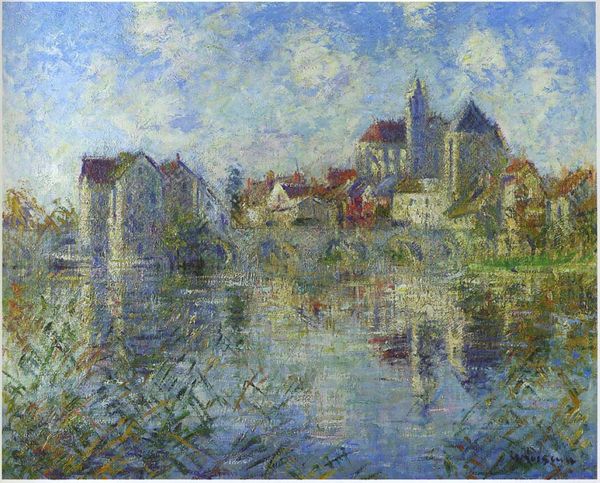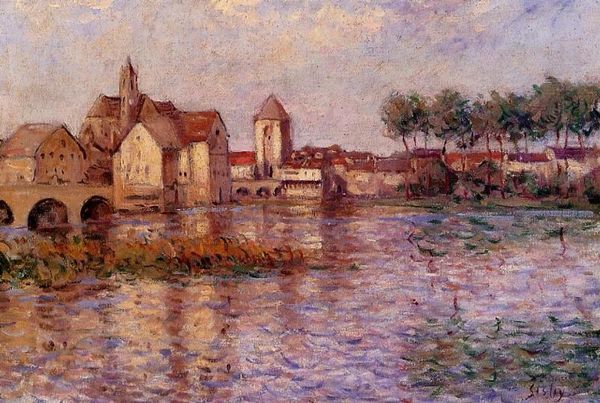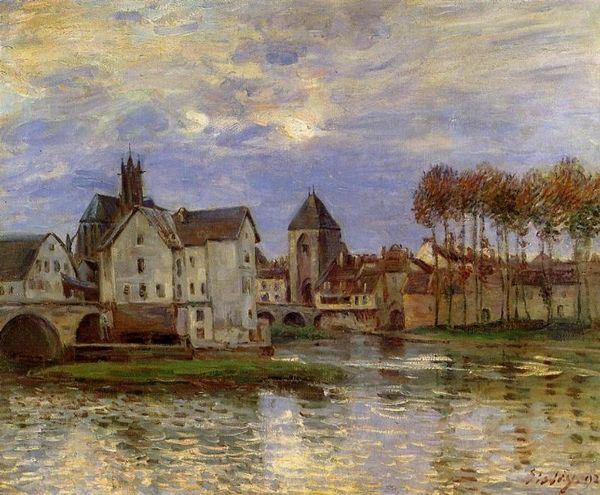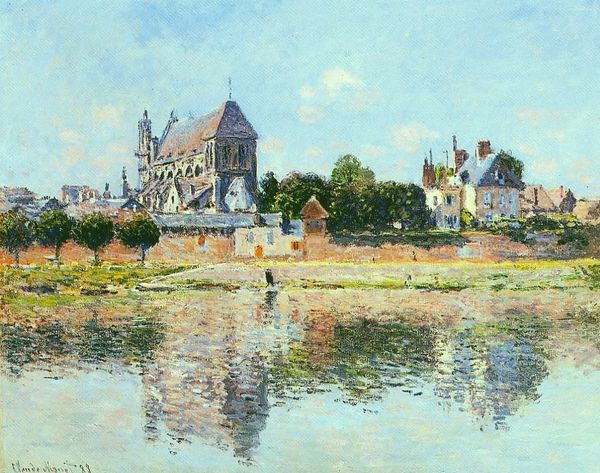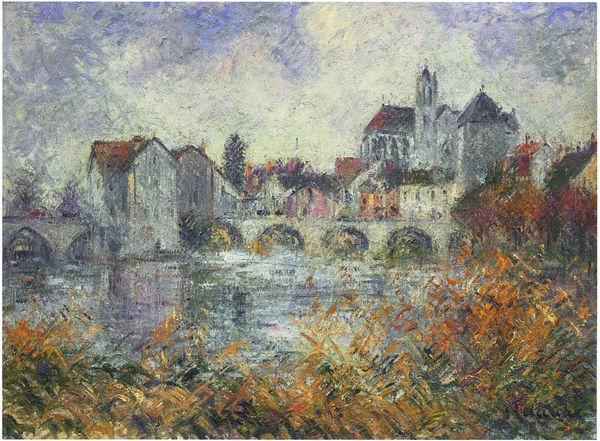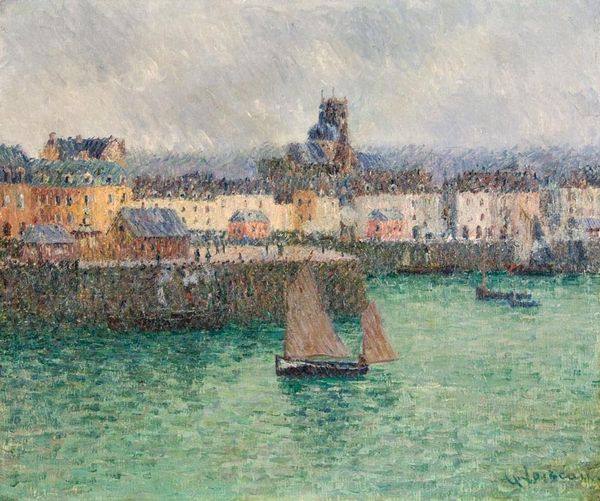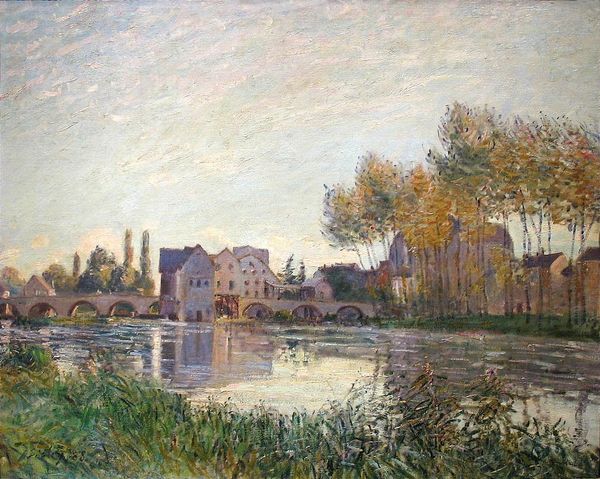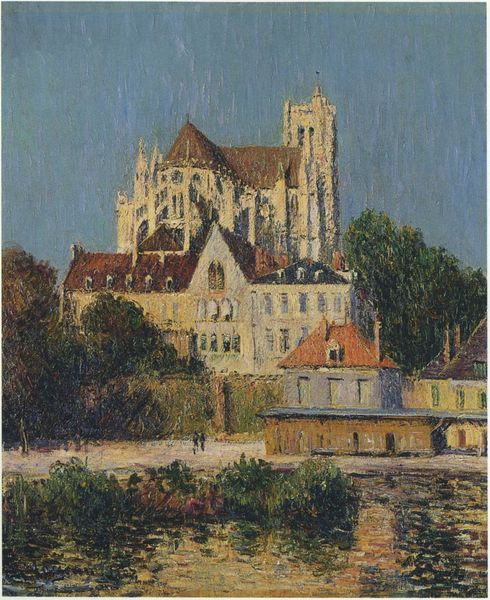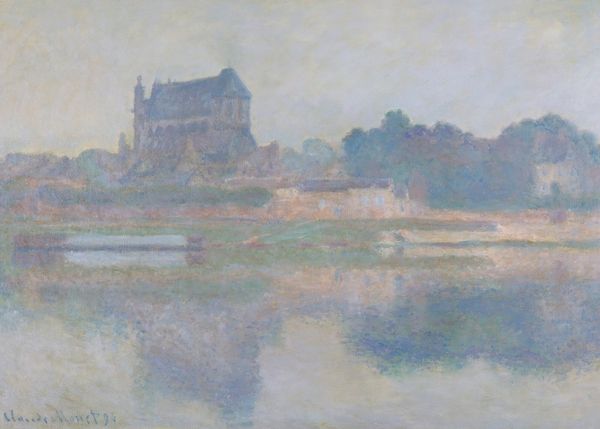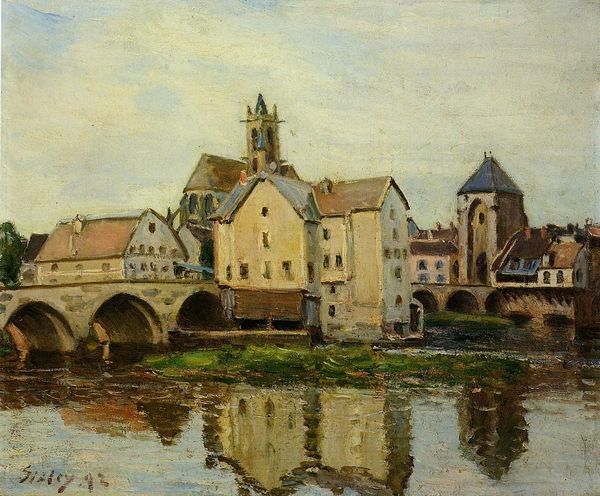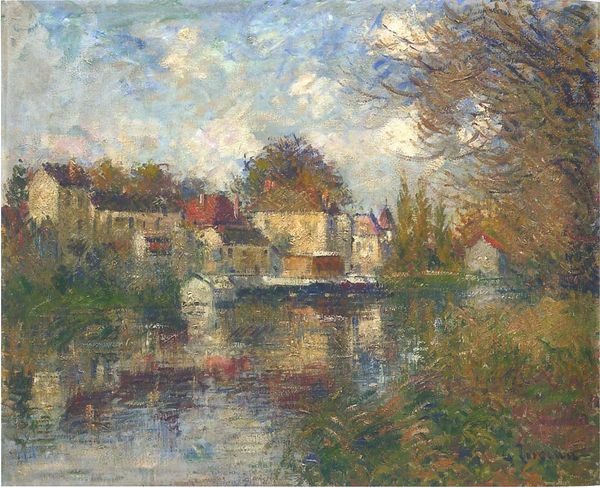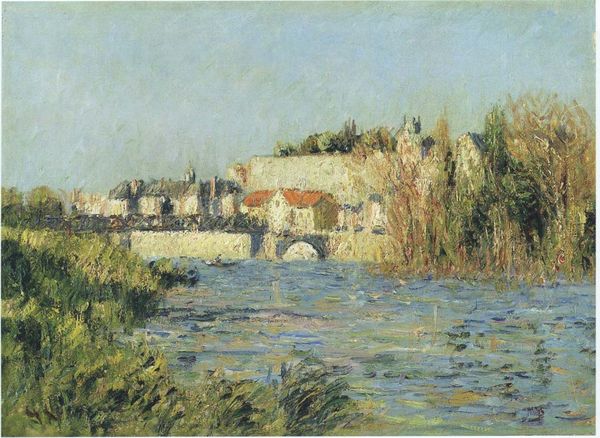
Copyright: Public domain
Editor: We're looking at "The Auxerre Cathedral," painted in 1912 by Gustave Loiseau. It’s an oil painting that gives a lovely Impressionistic take on a cityscape. It makes me think of lazy summer afternoons and a calm reflective energy, like light dancing on water. What draws your eye in this piece? Curator: The way Loiseau captures light, particularly on the water – it's mesmerizing, isn’t it? There’s a real joy in that broken brushstroke. This reminds me a bit of Pissarro’s cityscapes, but with a softer, more atmospheric touch, what do you think? It feels less analytical and more...felt, you know? There’s almost a longing in how he renders Auxerre. Editor: Yes, definitely more emotive than analytical. The way he layers the strokes—does that contribute to the feeling? Curator: Precisely! Those layers create depth and texture. But for me, it’s also the composition: that almost equal division between the reflection in the water and the architectural skyline above. It sets up a beautiful visual balance, right? What emotions surface when you consider the cathedral, dominating, but made of subtle flecks of light? Editor: I hadn't thought of it like that, a conversation between light and architecture, really beautiful! It almost makes me think about how time is both fleeting and monumental, existing all at once. Curator: Exactly! Loiseau makes you question everything, the impressionistic fleeting movement, the long permanence, all painted at the same time in the open air. Editor: This painting’s much more than what initially meets the eye. Thank you. Curator: My pleasure, perhaps our ears also found their eyes!
Comments
No comments
Be the first to comment and join the conversation on the ultimate creative platform.
